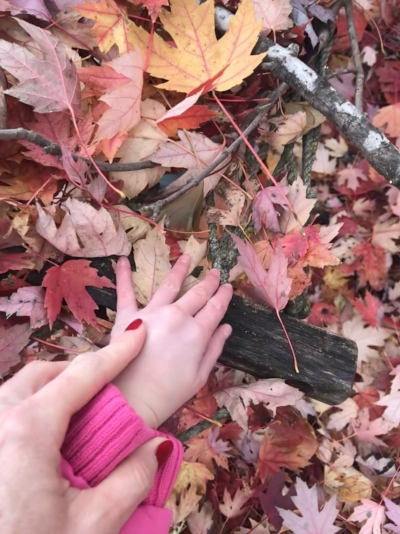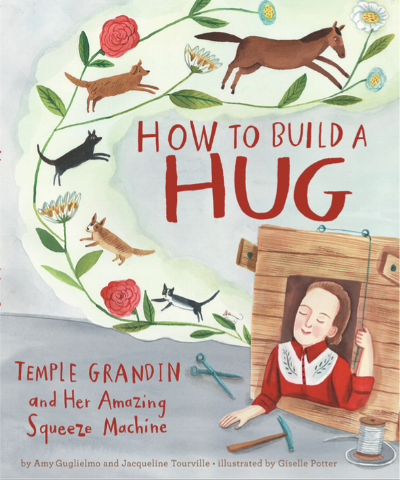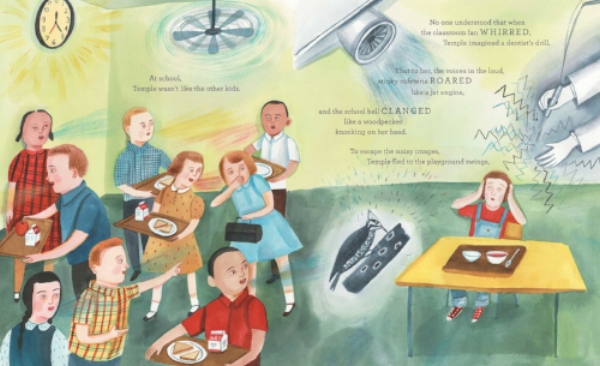Sights. Sounds. Tastes. Smells. Feelings.
If you’re a person of typical abilities, sensory details like these meld together without discernible beginning or end, making moments textural, memorable and complete.
I walked through life for many years this way, absorbing the world and doing my best to process and synthesize it - in music, 35mm film and journals. Many, many journals.
But when I became a mom, things changed. Our first child, Elsa, was born with a rare chromosome disorder, and we quickly learned that she wouldn’t be experiencing her environment as we do. Helping her access the things that most of us take for granted became our family vocation, and over time we grew well versed in her sensory likes and dislikes.
Crunching leaves? No problem.
Swinging with sis? Dreamy.
Touching? Nuh-uh. Not a favorite, although Elsa is generally tolerant of facilitated exploration.
Some sensory things bring Elsa great joy. The louder, bigger and more dynamic the experience, the better. But other things - like tasting, and trying to eat orally - bring her stress, agitation and fear.
It’s rare to find a picture book that reveals the realities of sensory processing challenges. It’s even more rare to find a book that also celebrates the unique gifts that individuals with special needs contribute to our world.
Both are delivered with artistry and heart in HOW TO BUILD A HUG: TEMPLE GRANDIN AND HER AMAZING SQUEEZE MACHINE, a new picture book from the author team Amy Guglielmo and Jacqueline Tourville, and illustrator Giselle Potter (Atheneum, 2018).
HOW TO BUILD A HUG is the story of Temple Grandin, an American professor of animal science and autism spokesperson, who invented a “squeeze machine” to simulate something that many of us claim with ease. A hug.
Engaging, emotive and aesthetically unique, HOW TO BUILD A HUG opens our senses to the life experience of a woman, who has helped others understand the many dimensions of autism. Here are five things to love about this story:
Grounded in Gifts
When we meet young Temple, the first thing we learn is that she’s a maker… of kites and obstacle courses and sheds. As a parent of a child with special needs, I routinely share Elsa’s diagnosis with new acquaintances to help them better understand her delays. The authors’ choice to ground Temple’s character in her gifts, and not her diagnosis, was really beautiful and inspiring to me.
As Temple peeks out from the shed she’s built, we see that she’s dressed in an overalls and a T-shirt. This, coupled with Giselle Potter’s unique illustrative style, started a family conversation right away:
“Is Temple a girl or a boy?” my girls asked. (They are at an age where they look to categorize gender immediately in the books they read.) I shared with them that not all girls look the same, and they said, “OK,” and off we went with the story. I was so grateful for the opportunity to emphasize this truth with them.
Sensory Simulation
Many things in Temple’s environment make her uncomfortable - scratchy socks, whistling teakettles, smelly perfumes… and hugs.
It’s hard for typical folks to understand how a hug could be unwanted or repulsive. In most circumstances, hugs convey comfort, safety and love. HOW TO BUILD A HUG gives readers a relatable, visceral comparison to understand Temple’s point-of-view: To her, hugs felt like being stuffed “inside the scratchiest sock in the world.”
At school, Temple is bombarded with even more sensory information. The classroom fan whirs like a “dentist’s drill.” The school bell feels “like a woodpecker knocking on her head.” While children may not identify with Temple’s experiences, the creators of this book use sounds and feelings that all readers can relate to in order to build understanding of Temple’s journey.
Relatable Relationships
My daughters’ favorite part of HOW TO BUILD A HUG? The scene below, when Temple asks her sister to jump on her, over the couch cushions. My girls LOVE smothering each other and jumping on each other to bond and connect, and really related to this sibling moment.
This scene provides a wonderful window into a non-typical family’s life, another gift for the reader. Our own family dynamic certainly has its quirks. We’ll do anything to get a smile out of Elsa, which would probably be unusual for people outside our family to see. It’s the specificity and uniqueness of HOW TO BUILD A HUG’s couch-jumping moment that speaks so honestly about Temple’s relationship with her sister.
The couch scene also offers insight into Temple’s intellect and awareness. She asked her sister to jump on her. Temple knew just what she needed, sensory speaking, and requested it, foreshadowing brilliantly to her future discovery.
Clarity and Impact
So how does one build a hug? We see Temple conceive it, step by step. While working at her aunt’s ranch in Arizona, Temple learns about a piece of equipment called the “cow squeeze,” which calms skittish cows.
The storytelling on the spread below paints a clear, impactful picture of how the “cow squeeze” works, which is crucial in understanding how Temple might apply the same technology to meet her sensory needs. It’s satisfying to read and see how Temple’s work experience connects so directly with a new, inspired idea. Which brings us to the doorstep of her big discovery…
Finding that Feeling
The climactic moment of HOW TO BUILD A HUG delivers exactly what the narrative sets out to do: Temple gets her hug, and she makes it with her own hands. This moment is made all the sweeter by a gorgeous illustration that envelopes Temple in all of the things she loves. It's magical and perfectly in-tune with Temple’s character and story arc.
Children and adults will walk away from this story with a clear understanding of Temple and her special talents, as well as with empathy for children who face sensory processing obstacles every day. Temple Grandin is an inspiration, and this story honors her and shares her spirit beautifully.
HOW TO BUILD A HUG: Temple Grandin and Her Amazing Squeeze Machine is available at or through your local bookstore, or via the online bookseller of your choice. This is the second book from author team Amy Guglielmo (@amyguglielmo) and Jacqueline Tourville (@jatourville), co-creators of POCKET FULL OF COLORS: The Magical World of Mary Blair, Disney Artist Extraordinaire (illustrated by Brigette Barrager).
One lucky reader will win a signed copy of HOW TO BUILD A HUG! Here's how to enter:
*** Win HOW TO BUILD A HUG ***
Simply...
1. "Like" this post (click the heart below)
2. Follow me (@anitraschulte) on Twitter
3. Retweet my pinned contest tweet by 11/16/18
(Submit a blog comment below and get a BONUS ENTRY!)
GOOD LUCK!










